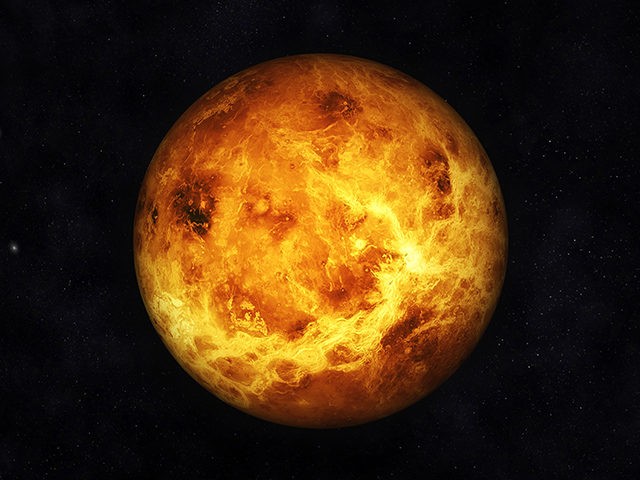Researchers announced Monday that they have identified possible signs of life in the harsh acidic clouds of the planet Venus.
Even though scientists did not find actual life forms, they noted that on Earth a gas called phosphine is produced by bacteria “thriving in oxygen-starved environments,” according to Reuters.
“The international scientific team first spotted the phosphine using the James Clerk Maxwell Telescope in Hawaii and confirmed it using the Atacama Large Millimeter/submillimeter Array (ALMA) radio telescope in Chile,” the report said.
MIT Molecular Astrophysicist Clara Sousa-Silva told NBC News she was shocked at the discovery.
“I put all this work into looking for phosphine everywhere else, but here it was on our nearest neighbor,” she stated.
The NBC report continued:
Venus, of a similar size to Earth, orbits nearer the sun — but it’s a scorched and inhospitable place, with surface temperatures hot enough to melt lead and a thick atmosphere unbreathable to humans filled with clouds of sulfuric acid. Nonetheless, scientists speculate that microbes might survive in the clouds of Venus, 30 to 40 miles above the surface, where it’s cool enough for water to form — although it would be a highly acidic environment.
Associate Administrator of NASA’s Science Mission Directorate Thomas Zurbuchen tweeted Monday that the agency looked forward to discussions regarding the findings:
An intriguing paper about chemistry on Venus was published today. @NASA was not involved in the research & cannot comment directly on the findings; however, we trust in the scientific peer review process & look forward to the robust discussion that will follow its publication. https://t.co/uA0QztrAnV
— Thomas Zurbuchen (@Dr_ThomasZ) September 14, 2020
“With what we currently know of Venus, the most plausible explanation for phosphine, as fantastical as it might sound, is life,” Sousa-Silva told Reuters, adding that life as an explanation for the discovery should always be the “last resort.”
“This is important because, if it is phosphine, and if it is life, it means that we are not alone. It also means that life itself must be very common, and there must be many other inhabited planets throughout our galaxy,” she continued.
However, some researchers expressed skepticism and said there might have been a mistake in how the data was collected, according to Popular Mechanics.
“They took the right steps to verify the signal, but I’m still not convinced that this is real,” said ALMA Observatory Scientist John Carpenter.
“If it’s real, it’s a very cool result, but it needs follow-up to make it really convincing,” he explained.
Robotic spacecraft visited Venus in the past but another probe might be necessary to confirm the recent discovery.
“Fortunately, Venus is right next door. So we can literally go and check,” Sousa-Silva concluded.

COMMENTS
Please let us know if you're having issues with commenting.